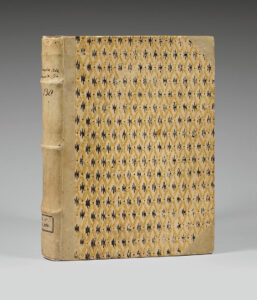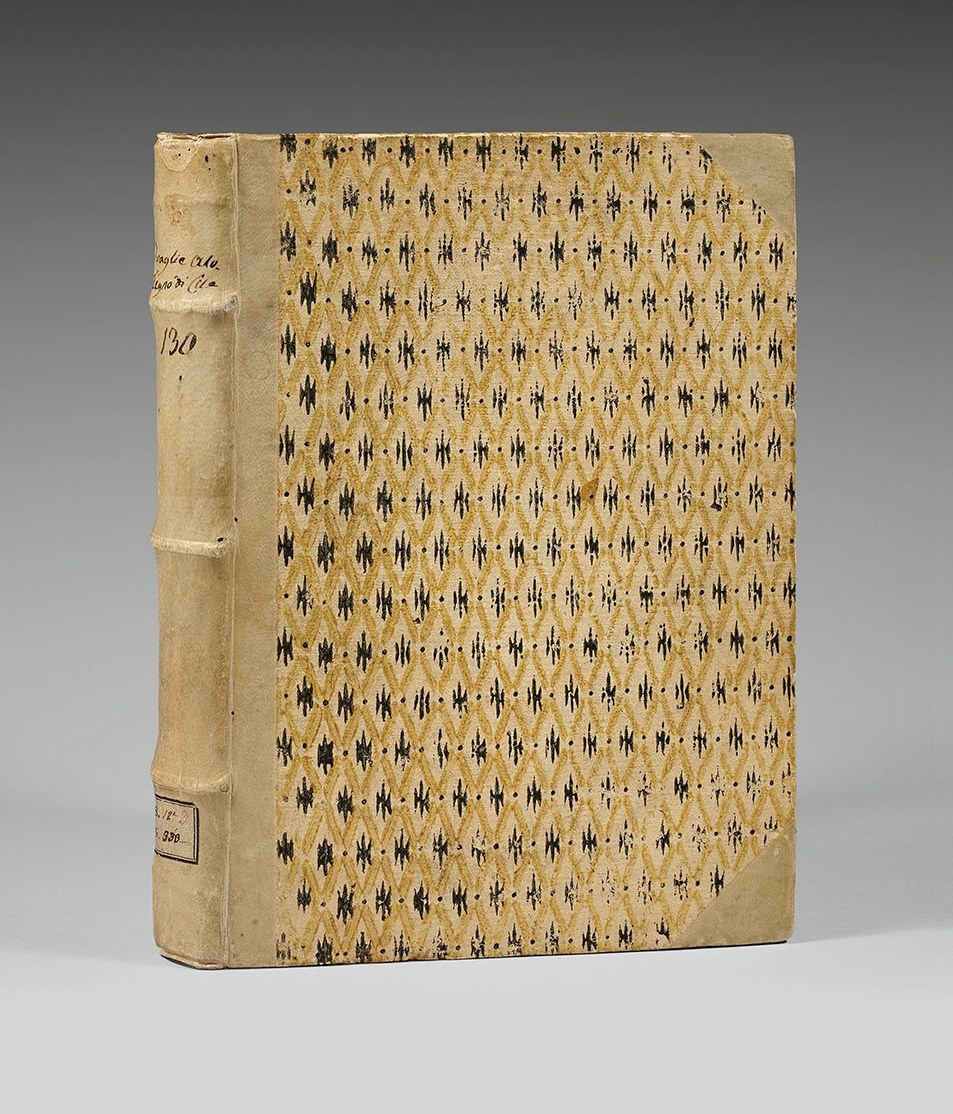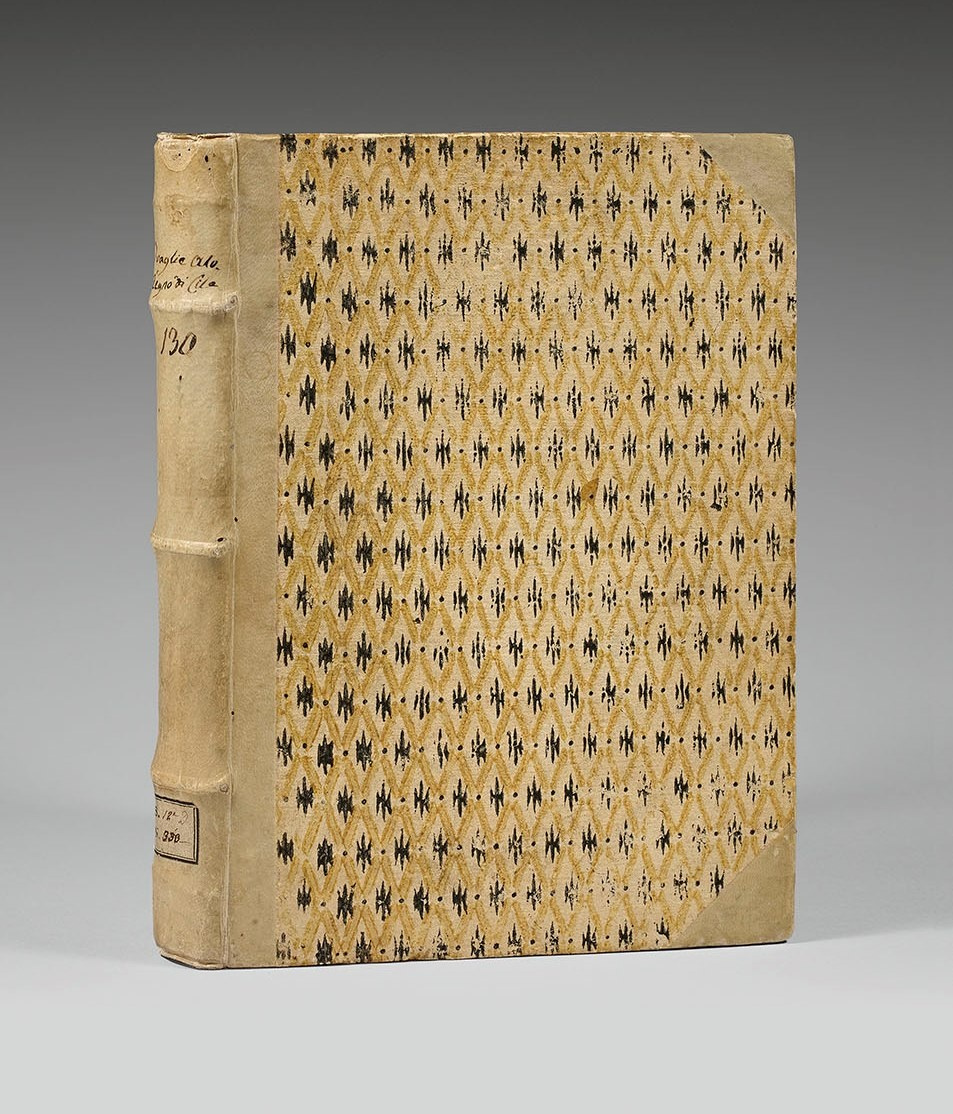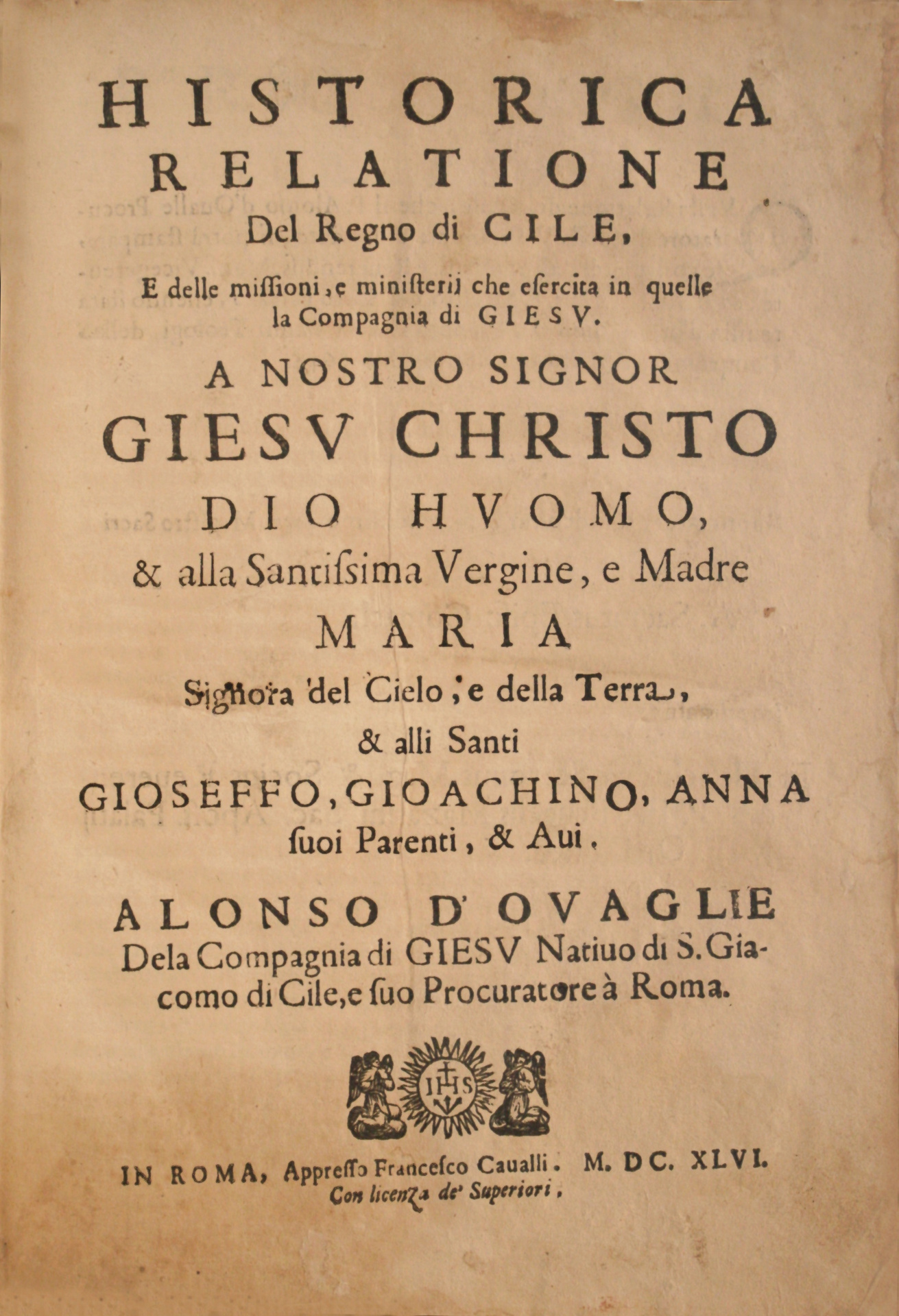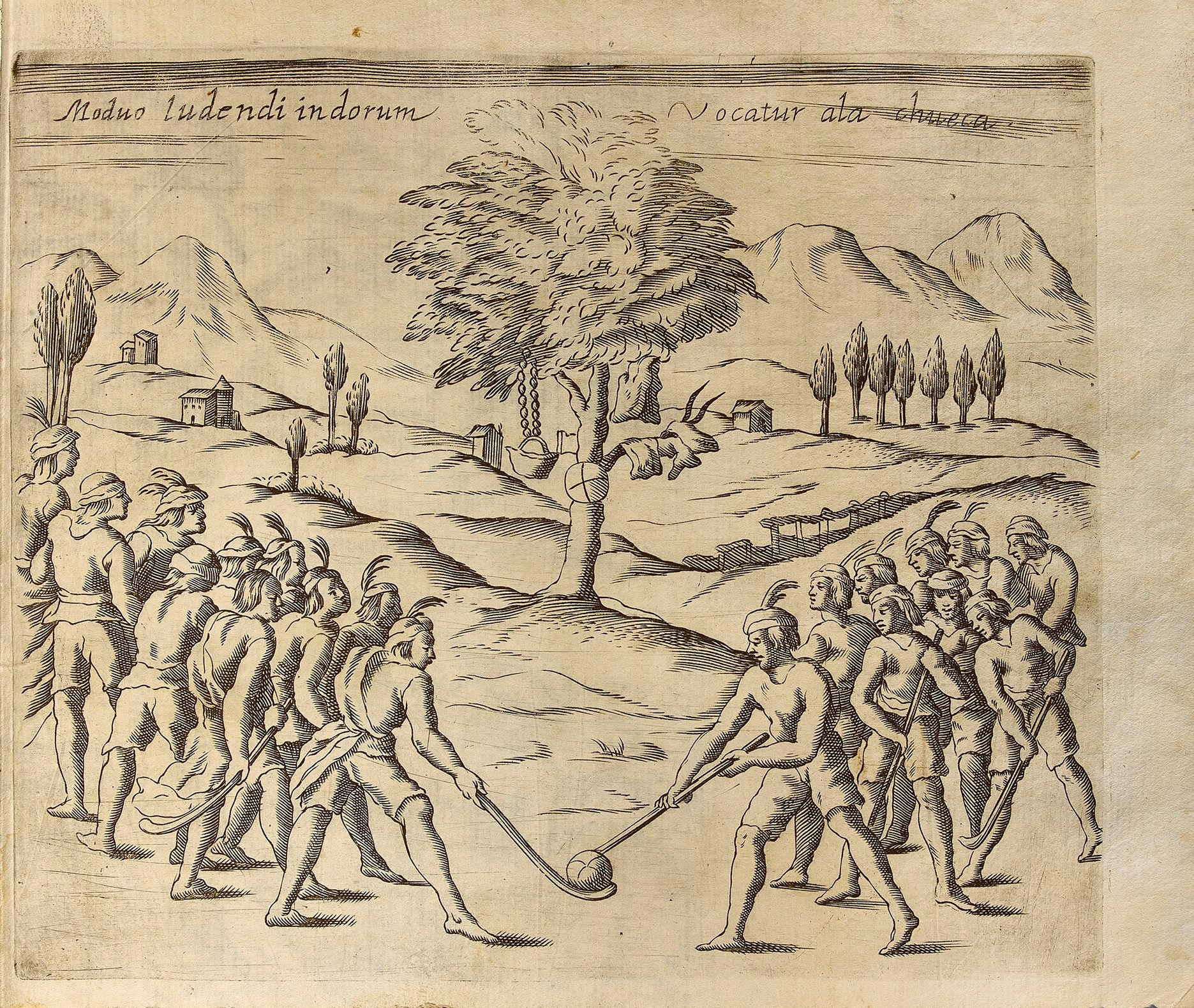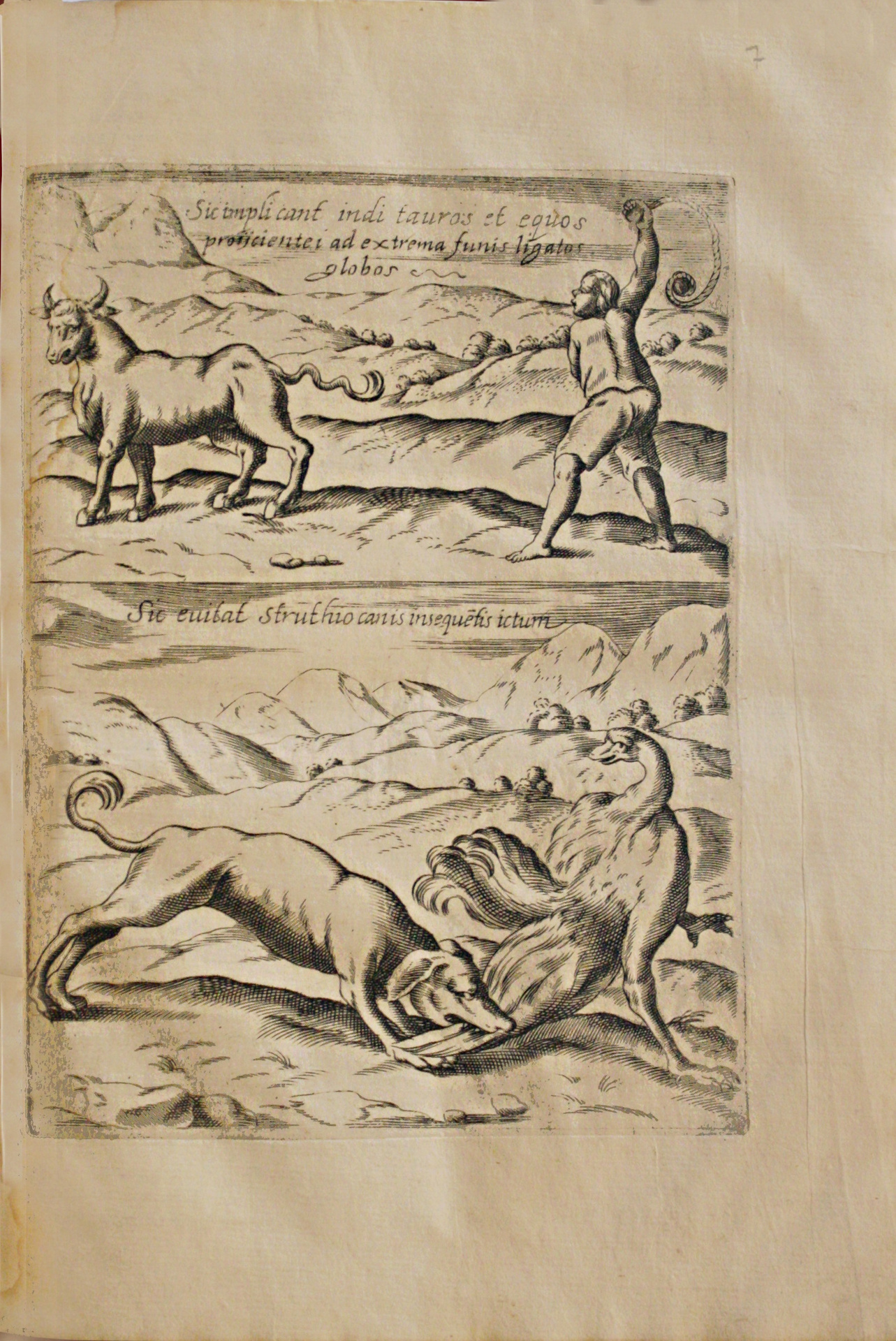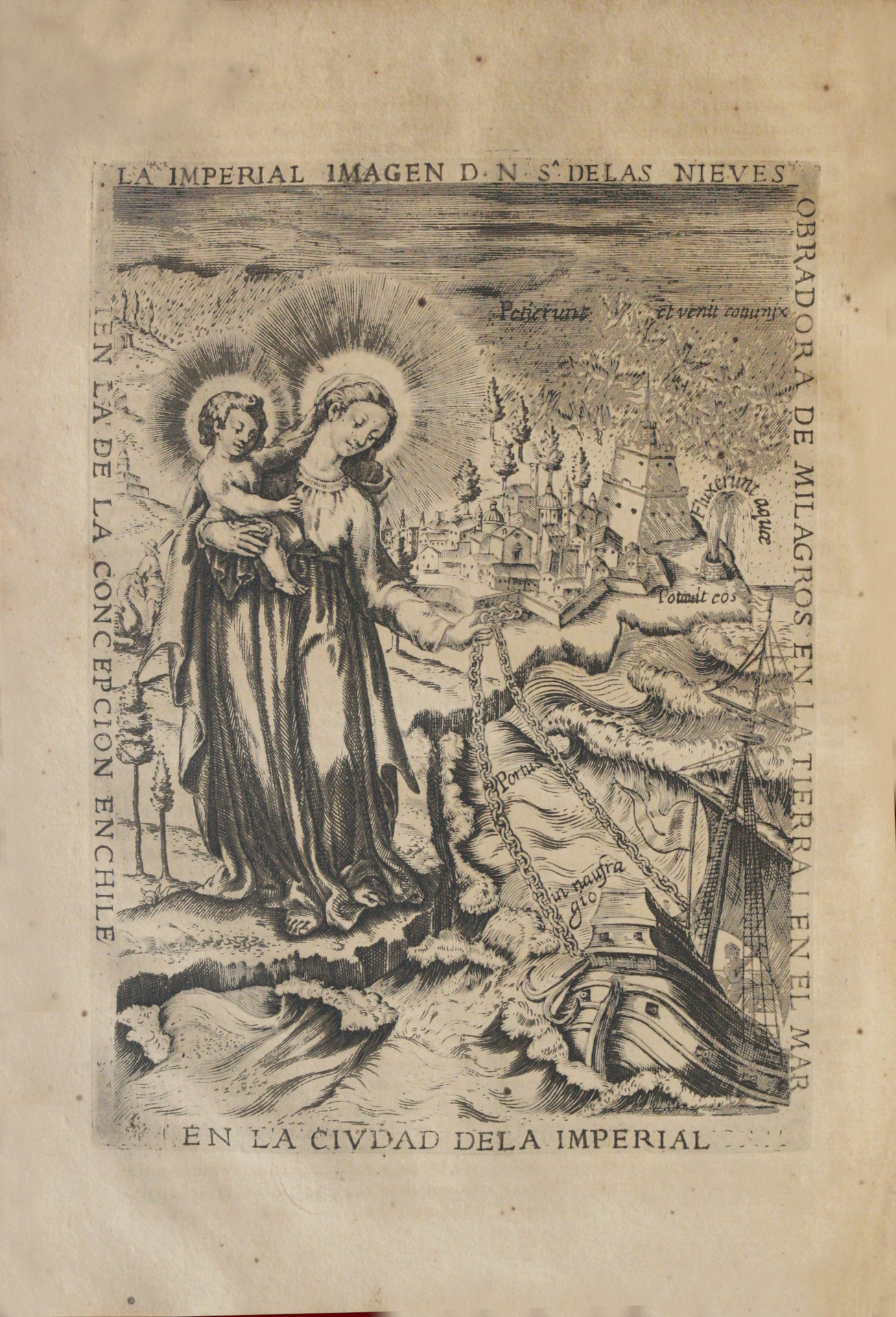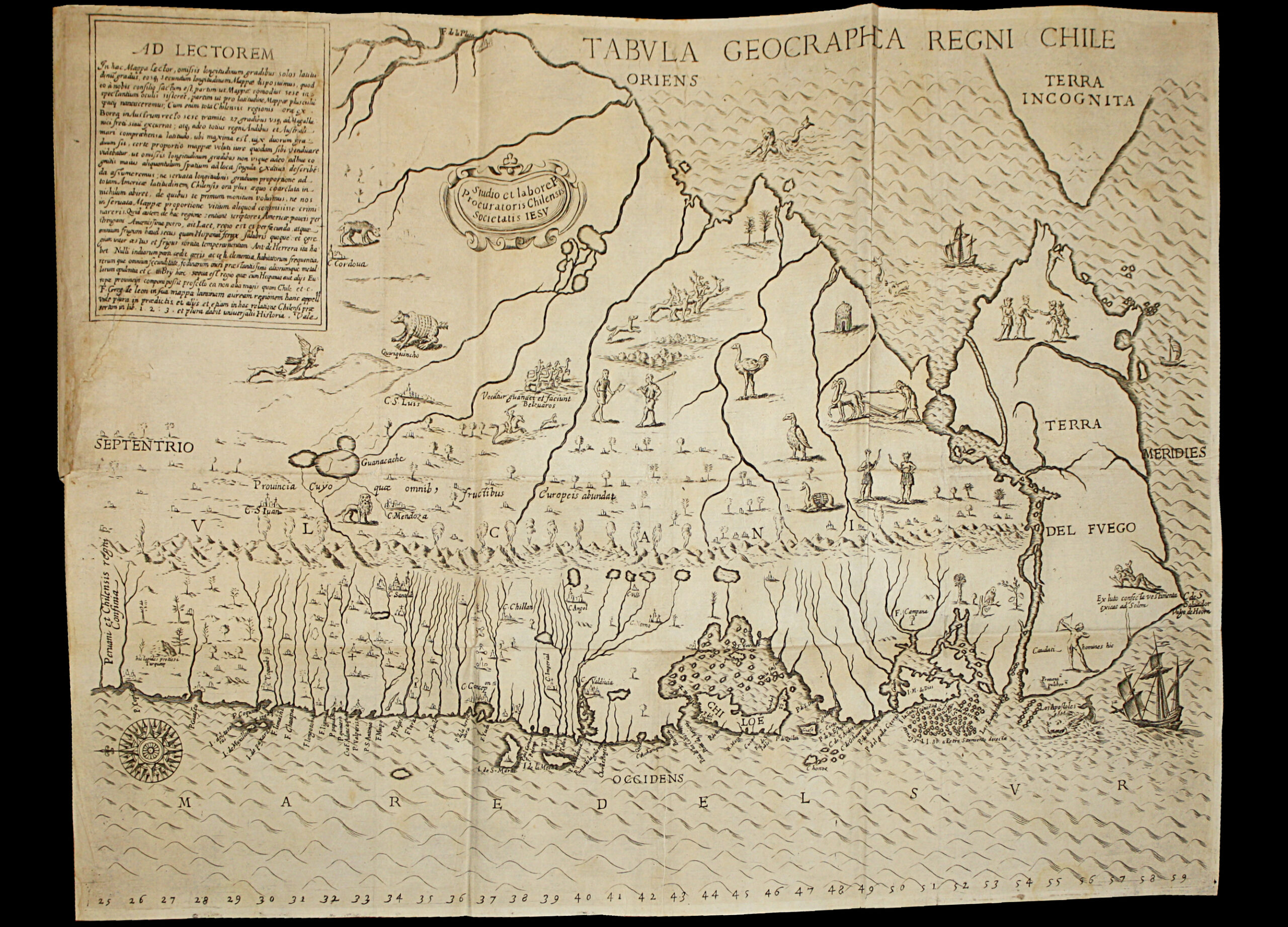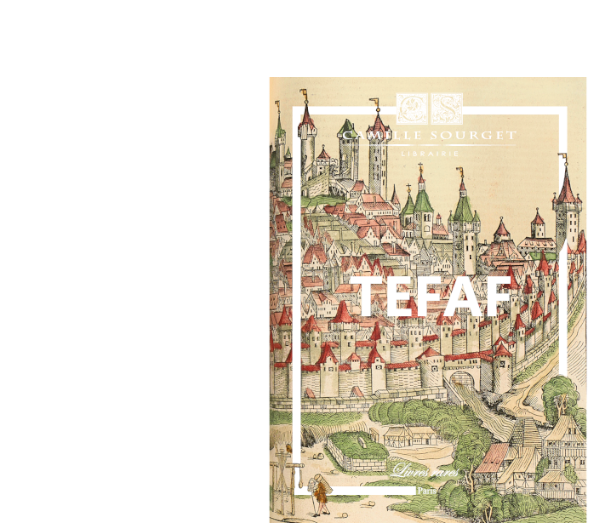Roma, Francesco Caualli, 1646.
4to [256 x 179 mm] of (4) prel. ll., 1 folded map, 378 pp. with 2 col.; Protesta dell’autore, 1 l., 6 plates in 3 ll. representing the ports of Valparaiso, Coquinbo, Quintero, Concettione, the Island of St. Mary and the Islands of Moche, followed by 12 plates in 6 ll. representing various buildings of Jesuits in Chile; in addition, there are 14 full-page figures. Some browned quires due as always to the poor quality of the paper, small restored têr in the large map, old restoration in upper margin of the title-page and l. mm1. Complete.
Quarter-vellum, decorative colored paper for use in parlor games on the covers, spine ribbed bêring the title written in ink, shelf mark at the foot of the spine. 18th century Italian binding.
First Italian edition of this extremely rare and sought-after book, considered as the best ancient chronicle about Chile.
“This history of Chile is rare and sought-after.” (Michaud).
“Very rare and sought-after account; most copies of this translation are more or less incomplete of plates. The collation of the copy above is accurate.
F. Ovalle, born in Santiago del Chile, in 1601, composed this work while he was occupying in Rome the position of procurer of his province. He died in Lima in 1651.” (Ch. Leclerc, Bibliotheca Americana, n° 1113).
Besides Leclerc describes his own copy as complete even though it is missing the lêf of Avertissement – (Leclerc, p. 262, n° 111), here present.
In 1646, the Chilên Jesuit Alonso de Ovalle published in Rome his Historica relacion del reino de Chile. It is an impressive and important work since it counts over a hundred and thirty chapters. It is considered important since the grêt qualities of his author and his writing combined to the precision of his documentary contribution have made of it a classic of the Southern American colonial historiography.
As many grêt creole works of its time – like la Cronica moralizada… by F. Antonio de la Calancha (Barcelona, 1638) or Tesoros verdaderos… by F. Juan Melendez (Rome, 1681) – this one was published in Europe, and since the first lines of his note the rêder, Alonso de Ovalle’s intentions are clêr: put an end to the gigantic ignorance of the Europên public about Chile.
“As we can see this work is essentially organized around 3 grêt lines: the presentation of the Chilên and aboriginal environment, the conquest of the country by the Spanish, and that followed wars. Finally, according to the well established tradition of the American conventual chronicle, the progress of faith and the missionary work exaltation to which the author belonged, the Society of Jesus.” (Bernard Lavallée, Bordêux III).
This first Italian edition was printed the same yêr as the first edition, which was printed in Spanish.
Alonso de Ovallo, born in Santiago in 1601 and died in Lima in 1651 lived in Rome in the 1640’s, where he published his work.
We find in his History of Chile important descriptions on geography, natural history and the inhabitants of Chile, as well as the Spanish conquest. Chapters dêl with America’s first inhabitants (pp. 80-84), fishes and fishing (pp. 43-44), bird hunting (pp. 48-50), and several other first-hand testimonies about Indians of this land.
The interest of this book also stands in its illustration, which is both fine and peculiar. It is composed of 14 copper-engraved plates showing aboriginals, the massacre of three Jesuits, an Indian trying to capture a bull, the armed fight between the Chilêns and the Spanish, religious figures, the map and perspective of the town of Santiago, etc. 12 xylographic plates on six lêves representing various buildings of the Jesuit society in Chile, and 6 other xylographic plates on three lêves showing ports and archipelago of the Chiloe islands.
A superb folding map of Chile and Tierra del Fuego, finely copper-engraved is included at the end of the volume. We can see fantastic crêtures on it and imaginary representations such as a monkey-man with a tail cross bowing an arch and a country scene where two lamas pull a plough.
A very attractive copy of this extremely rare Americana, of grêt importance for the knowledge of Amerindian populations of Chile and the cartography of the country.
